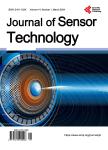Validation of Autonomous Microbe Sensor Prototype for Monitoring of Microorganisms in Injection Seawater Systems
Validation of Autonomous Microbe Sensor Prototype for Monitoring of Microorganisms in Injection Seawater Systems作者机构:Saudi Arabian Oil Company (Saudi Aramco) Dhahran KSA Danish Technological Institute (DTI) Aarhus Denmark
出 版 物:《Journal of Sensor Technology》 (传感技术(英文))
年 卷 期:2016年第6卷第4期
页 面:81-100页
学科分类:07[理学] 0701[理学-数学] 070101[理学-基础数学]
主 题:DNA Staining Automated Monitoring Autonomous Microbe Sensor Microbial Sensor Prototype Injection Seawater
摘 要:Microbial growth in the water injection system is a well-known problem with severe operational and financial consequences for the petroleum industry, including microbiologically influenced corrosion (MIC), reduced injectivity, reservoir plugging, production downtime, and extensive repair costs. Monitoring of system microbiology is required in any mitigation strategy, enabling operators to apply and adjust countermeasures properly and in due time. In previous studies [1] [2], DNA staining technology with SYBR Green dye was evaluated to have a sufficient detection limit and automation potential for real-time detection of microbial activity in the Saudi Aramco injection seawater. In this study, technical requirements and design solutions were defined, and an autonomous microbe sensor (AMS) prototype was constructed, tested and optimized in the laboratory, and validated in the field for automated detection of microorganisms in the harsh Saudi Arabia desert environment and injection seawater. The AMS prototype was able to monitor and follow the general microbial status in the system, including detection of periods with increased microbial growth or decreased microbial numbers following biocide injection. The infield AMS detection limit was 105 cells/mL. The long-term field testing also identified the areas for technical improvement and optimization for further development of a more robust and better performing commercial microbial sensing device.



